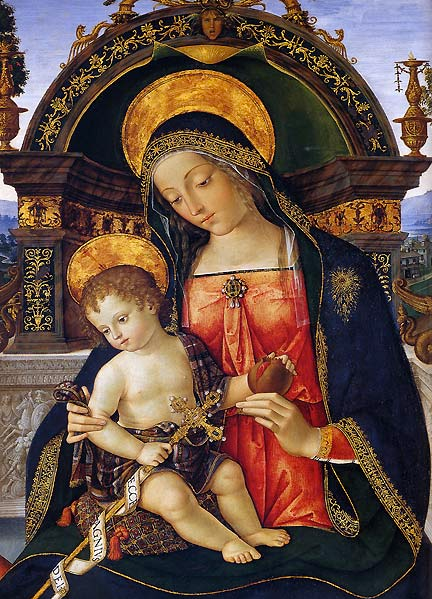FINDING MARY IN THE SCRIPTURES – Part V
Fr. James McMillan, SMM
FINDING MARY . . .
We often hear it said that the New Testament has very little to say about the Blessed Virgin Mary.
This is a point that many non-Catholics (and some Catholics as well) have been repeating for years.
She is mentioned, of course, at the conception and birth of Christ. She is prominent enough in the Infancy Narratives, as they are called. And she makes an appearance when Christ is twelve years of age. All of this, we are told, is to be expected. After all she had to be present in any account of Christ’s childhood.
MARY’S APPEARANCES IN SCRIPTURE
But her appearances during the public life of Christ, these questioners inform us, are severely restricted and of no consequence to the work of Christ. Our Lady is mentioned at the marriage feast of Cana, where Christ seemingly rebuked her for interference. She comes to see Christ, along with “His brethren” and is again apparently rebuked. She is alluded to in the praise that “a woman in the crowd” gave to her for being Christ’s mother. And once more Our Lord seems to downplay her importance. In St. John’s gospel, she is there at the foot of the cross in what looks like a very passive role. And there is the final reference to her in the Acts of the Apostles. There she was present in the upper room along with the disciples, awaiting the coming of the Holy Spirit.
None of this, we are sometimes told, has any great significance in the work of the Redemption. Her role was indeed of some importance in the early years of Christ’s life. But once the Savior began to teach and preach and proclaim Himself to be the promised Messiah, she fades from the picture and does nothing that is of any genuine importance to the salvation of the human race. The New Testament, our questioners continue, does not give her any of the emphasis that the Catholic Church attributes to her.
GOD’S PLAN . . .
Now this is an old objection, as popular today as it was centuries ago. An objection that the Church has had to face many times. Some have tried to answer it by pointing to the development of doctrine in the Church. The Church acquires a deeper and deeper understanding of the truths of the faith. Some truths that were not too clear in the beginning have taken on more meaning and are grasped more precisely. Others would respond by saying that the Bible, even the New Testament, is not the sole source of revealed truth, that we must take the oral and written tradition of the Church into account. It is from this living tradition, they say, that the Church derives most of its teaching about the role of the Mother of God in our redemption.
Answers like these leave a great deal to be desired.
They don’t deal with the basic question at all. In fact, they seem, more than anything else, to actually admit that the New Testament has little to tell us about Our Blessed Lady’s role in the work of salvation.

Madonna and Child: Italian Painter: Pinturicchio (1454-1513)
Also known as Pintoricchio or Pinturicchio. His formal name was Bernardino di Betto, also known as Benetto di Biagio or Sordicchio.
It will be the purpose of the next several articles in this series to investigate these “significant appearances” of Our Blessed Lady in the whole life of Christ, including His public life.
Return to The Queen: Articles
. . . FOR REDEMPTION
The Second Vatican Council had this objection in mind when, in chapter eight of The Constitution on the Church (November 21, 1964), it set forth the Church’s doctrine on the function of the Blessed Virgin Mary in God’s plan for our salvation.
“The sacred writings of the Old and New Testaments,” the Council explained, “show the role of the Mother of the Savior in the plan of salvation in an ever clearer light and call our attention to it.
This union of the mother with the Son in the work of salvation is made manifest from the time of Christ’s virginal conception up to His death . . .
And Vatican II makes it abundantly clear that this role of Our Lady did not cease when Christ began His public life of preaching and teaching and convincing people that He was truly the Messiah that was to come into the world. “In the public life of Jesus,” the Council states, Mary appears prominently . . .” (A better translation of the Council’s document reads: “In the public life of Jesus, Mary made significant appearances.”)
SIGNIFICANT APPEARANCES
It will be the purpose of the next several articles in this series to investigate these “significant appearances” of Our Blessed Lady in the whole life of Christ, including His public life. We will see that her function was not to be merely passive, to be acted upon rather than acting herself. She was not simply a spectator in the life of Christ, including His public life. God assigned her the task of being the associate of Christ in our redemption. An associate who was more intimately connected with Him than any other in the New Testament.


